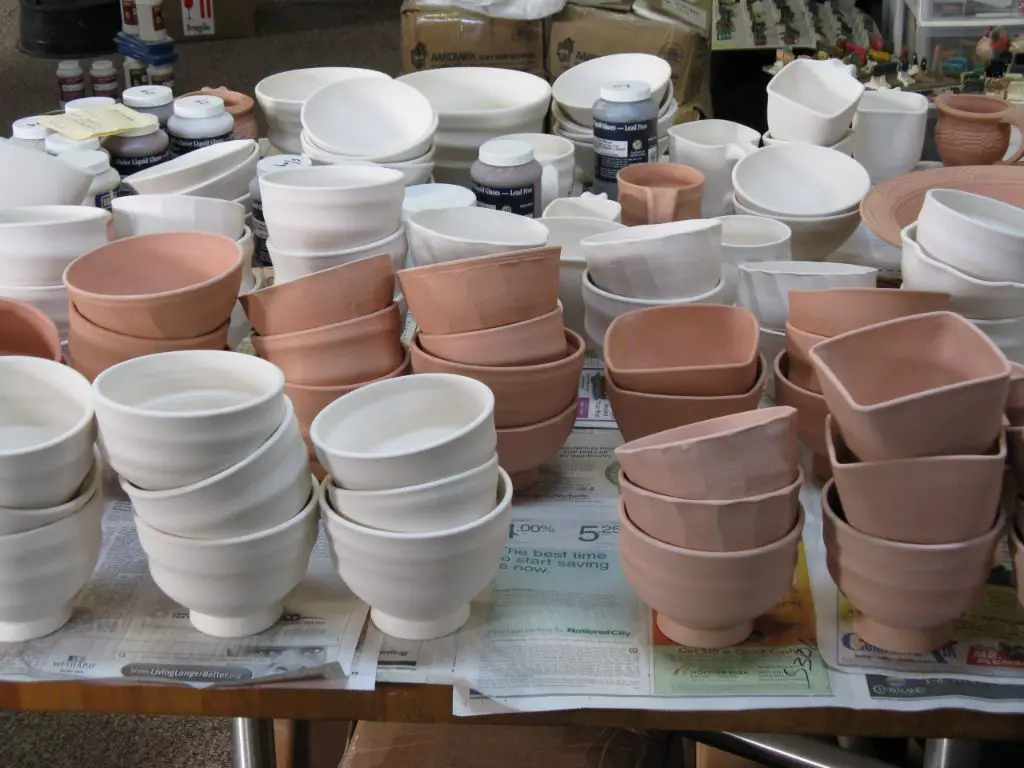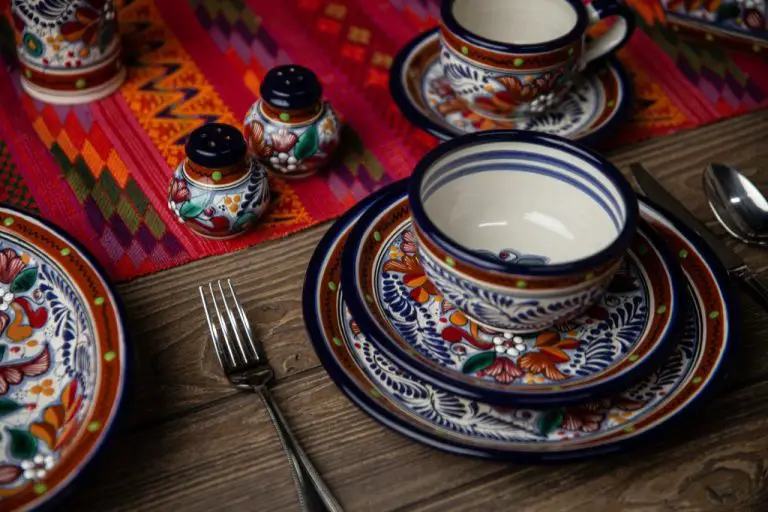What Is A Kiln Used For?
Introduction
A kiln is a thermally insulated heated chamber used for the purpose of hardening, burning, drying or heating materials (The Differences and Similarities Between Oven, Kiln, Forge …). Kilns have been used for thousands of years to make pottery, bricks, tiles and other ceramic materials. They are also used in various industrial processes like drying lumber, curing limestone and processing certain foods.
The main feature that distinguishes a kiln from an oven or furnace is that it is designed to provide a controlled heating rate and protective atmosphere for the items inside. Kilns allow operators to program specific temperature ramps and target temperatures tailored to the material being fired. They are crucially important across many industries today.
Firing Pottery
Firing pottery is the process of heating clay objects in a kiln to vitrify and strengthen the clay through sintering. When clay is shaped into pottery and allowed to air dry, it is weak and porous. Firing the clay at high temperatures causes the clay particles to fuse together through vitrification, creating a strong, non-porous material.
There are several standard firing temperatures used in pottery making:
- Bisque firing – Around 1000°C. The first firing, which hardens the clay.
- Low-fire – Around 1100°C. Produces earthenware pottery.
- Mid-range – Around 1200°C. For stoneware pottery.
- High-fire – Around 1300°C. For stoneware and porcelain.
Higher firing temperatures result in harder, more durable ceramics. Specific clay bodies are formulated to be fired at certain optimal temperatures. The firing process also sets any glazes or decorations applied to the ware.
Kilns allow control over temperature, heating rate, and cooling time to achieve the desired effects in the clay work. Historically, pottery was fired in wood-burning or coal-burning kilns before the invention of electric and gas kilns. Careful monitoring and stoking was required to achieve uniform firing results.
Modern electric kilns with pyrometers and controllers allow automatic firing to preset programs and schedules. This makes firing more consistent and requires less labor. Many ceramic artists, however, still prefer the unique effects obtained from traditional wood-fired kilns.
Proper firing is essential for creating lasting, functional pottery. Kilns allow this important process to be conducted in a controlled, repeatable manner.

Source: Measuring Heatwork & Temperature – Kilns & Firing
Glassmaking
Glassmaking heavily relies on kilns to melt glass materials and anneal finished glass pieces. The process of melting glass requires heating it to extremely high temperatures of around 1300-1400°C. Kilns allow glassmakers to achieve and maintain these temperatures in order to liquefy silicon, soda ash, limestone and other ingredients that make up glass. Once the glass materials are melted down, glassmakers can shape and mold the viscous molten material into various products.
After glass objects are shaped, they undergo a carefully controlled annealing process within the kiln. Annealing allows stresses in the glass to relax and prevents breakage. Kilns slowly cool newly formed glass items from around 580°C to room temperature. This gradual cooling regime is critical to preventing cracks and fractures. Modern glass kilns often have sophisticated digital controls to program precise heating and cooling schedules for melting and annealing.
Some examples of glass products that require kilns include glass art, vessels, tableware, lenses, and more. Kilns allow artists and other glassmakers to carefully shape hot glass into unique functional, decorative or sculptural pieces.
Metalcasting
Metalcasting or metalworking is the process of melting and pouring molten metal into molds to produce solid metal parts. Metalcasting kilns are essential equipment used for melting, holding, and pouring molten metals in foundries and metal fabrication shops. The most common metals casted are bronze, aluminum, iron, steel, and stainless steel.
Metalcasting kilns allow precise control over temperatures up to 3000°F to melt various metals with different melting points. Kilns used for iron or steel casting must withstand extremely high temperatures. Propane, natural gas, or electric kilns are heated to the necessary temperature for complete melting of the metal charge.
Once the metal reaches pouring temperature, the molten metal can be transferred manually by ladle or automatically poured into sand molds to produce cast metal parts in the desired shape. Smooth cast parts may undergo additional finishing or machining. The metalcasting process with kilns enables efficient small to large scale production of precision metal components.
Sources:
https://www.ebay.com/b/Jewelry-Kiln-In-Jewelry-Casting-Tools/262020/bn_7022487323
Lumber Drying
One of the most common uses for kilns is to dry lumber and reduce its moisture content. Freshly cut lumber typically has a moisture content between 30-200%, depending on the species (What Is Kiln Drying?). This high moisture content makes the wood susceptible to warping, cracking, and fungal decay if used immediately in construction or woodworking projects.
Kiln drying rapidly removes moisture by applying heat up to 160°F and air circulation within an insulated chamber. The lumber is stacked and loaded into the kiln with space between each board to allow for air movement. This controlled process dries the lumber down to a target moisture content between 6-8% over a period of days or weeks, depending on thickness.
Properly kiln dried lumber is more stable, lighter in weight, and less prone to shrinkage and other defects once in use. Furniture, flooring, framing, and other finished wood products require the use of kiln dried lumber during manufacturing. Overall, kiln drying improves the quality and durability of wood used for construction and woodworking.
Food Processing
Kilns can be used in food processing for pasteurization and drying foods. Pasteurization involves heating foods to destroy harmful microorganisms and extend shelf life. Kilns allow precise temperature control for effective pasteurization. For example, milk is heated to 145°F for 30 minutes to pasteurize. Meats may be pasteurized at temperatures between 150-165°F.1
Kilns are also commonly used for drying foods like fruits, vegetables, and coffee beans. Removing moisture prevents spoilage and extends shelf life. Coffee beans are dried in kilns to reduce moisture content from 60% down to 12%. The beans are spread out on trays and heated between 90-140°F. Precise temperature and airflow control in kilns is important to avoid damaging the beans.2 Kiln drying also improves the flavor of the coffee.
Waste Management
Kilns are increasingly being used in waste management for the incineration of hazardous materials. Rotary kiln incinerators in particular are becoming more widespread as the waste management industry evolves to handle more complex and diverse waste streams (Rotary Kiln Incinerators on the Rise in Waste Management). The high temperatures achieved in rotary kiln incinerators, often between 1,000-1,400°C, allow for the complete combustion and destruction of hazardous wastes.
Rotary kiln incinerators are ideal for the incineration of industrial and medical wastes that contain organic contaminants such as solvents, pesticides, pharmaceuticals, PCBs, and other hazardous compounds. The rotary design allows waste materials to be efficiently processed with minimal emissions compared to other incineration methods. Hazardous air pollutants and dioxins/furans can be destroyed at 99.99% efficiency (Rotary Kiln Incinerators in Waste Management & Water Treatment). The ash that remains after incineration is usually disposed of in secure landfills.
Brick and Tile Production
Kilns have been used for thousands of years to fire bricks, roof tiles, floor tiles and other clay building materials. The earliest known brick kilns date back to around 3500 BC in Mesopotamia (1). More recently, Roman kilns were crucial for producing the bricks and tiles used extensively in buildings and infrastructure across the Roman Empire.
Roman kilns were typically shaped like an upside-down bell and made from brick or tile (1). They were fueled by wood, charcoal or other materials. Temperatures could reach over 1000°C to fully harden the clay. The bricks and tiles were stacked inside the kiln and fired for several days before being removed (2).
Roman legions operated mobile kilns during military campaigns to supply building materials. Permanent brickworks sprung up across the empire to meet large-scale demand, especially near urban centers like Rome and Constantinople. The legions also spread brickmaking knowledge and techniques wherever they traveled (1).
Today, the brick and tile industry continues relying on kilns for high-volume production. Modern kilns are more automated but still operate on the same basic principle of firing shaped clay at high temperatures.
(1) https://akjournals.com/view/journals/072/72/1/article-p27.xml
(2) https://www.academia.edu/50920462/Brick_and_tile_kilns_in_Roman_Pannonia_A_state_of_research?f_ri=1156993
Lime Production
One of the key uses of kilns is to produce quicklime (calcium oxide) through the heating of limestone (calcium carbonate). This process is known as calcination.
Inside the lime kiln, the limestone is heated to temperatures between 900°C and 1,200°C, causing it to undergo thermal decomposition into quicklime and carbon dioxide gas. The chemical reaction looks like this:
CaCO3(s) → CaO(s) + CO2(g)
The limestone is typically fed into the lime kiln from the top, and hot combustion gases pass counter-flow up through the kiln, heating the limestone. The limestone decomposes into quicklime which slides down towards the bottom of the kiln, while the carbon dioxide exits from the top of the kiln.
According to the U.S. Geological Survey, “The lime kilns uses bark dust as fuel, but also screening rejects, tall oil, tall oil pitch, methanol and fuel oil when needed.” (https://odr.chalmers.se/bitstreams/9d71ee52-d513-4b86-b9ff-c125f9b181e2/download)
The quicklime exiting the kiln is then used in a variety of applications, such as steel manufacturing, construction, and water treatment due to its reactive properties. Overall, lime kilns are an essential part of the lime production process.
Conclusion
In summary, kilns have served a diverse range of important functions throughout human history. Some of the main uses of kilns include firing pottery, glassmaking, metalcasting, lumber drying, food processing, waste management, brick and tile production, and lime production. Kilns have enabled the creation of essential items like ceramics, glass, and metals that have been crucial to the advancement of civilizations. The significance of kilns is evident when examining their vital role in crafting materials for construction, tools, art, and more. Looking across the centuries, kilns stand out as an indispensable technology that allowed human creativity and industry to thrive.

